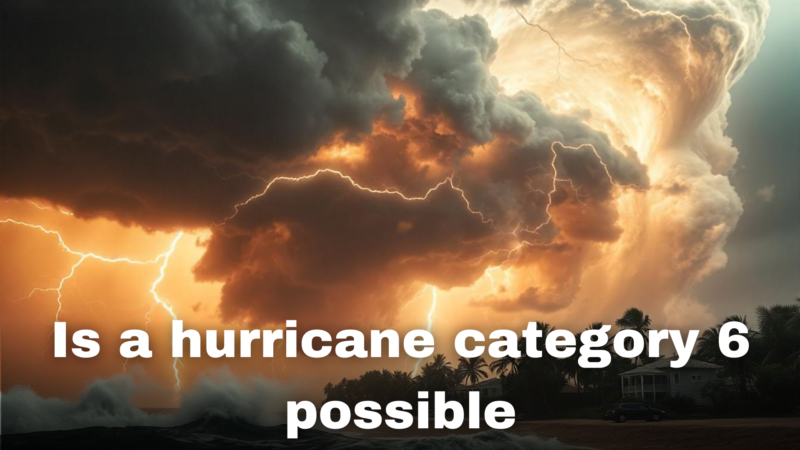Is a hurricane category 6 possible

Is a hurricane category 6 possible
Is a Category 6 Hurricane Possible? Exploring the Science Behind Extreme Storms
Hurricanes are rated on a five-point Saffir-Simpson Hurricane Wind Scale, which is an indication of the sustained winds during the storms. Category 5 is the worst of them all; it has winds greater than 157 mph (252 km/h), causing catastrophic damage. Yet, the question arises of whether this category would have existed if over half of the tropical cyclones had been stormy due to climate change. Why not a Category 6 hurricane?
Why Isn’t There a Category 6?
The scale reaches up only to Category 5 because, by definition, any storm above this level is already potentially able to cause complete destruction. That is the reason why the scale does not surpass this point: at that level, winds are strong enough to cause that extreme danger of damage to any structure that would be built, no matter how well constructed it may be. However, scientists and meteorologists have seen hurricanes rising in their severity, leading to debate on whether the scale should extend further.
For example, some hurricanes in recent years have maintained winds speeds well over the Category 5 limit; Hurricane Dorian of 2019 reached wind speeds that reached up to 185 mph and Hurricane Patricia in 2015 reached wind speeds up to 215 mph. Some recent storms raise a doubt if the Saffir-Simpson scale represents the intensifying winds of modern hurricanes.
Climate Change and the Potential for Stronger Storms
Climate change plays a major part in the increased strength of hurricanes. Thicker ocean waters give more energy to hurricanes as they grow stronger and develop faster. In this process known as rapid intensification, it occurs more often. Hotter air retains more moisture, bringing more abundance of rain and flood during storms. All these conspire to make hurricanes even more destructive than the scale under which they are measured.
Although there is no Category 6 classification, some scientists believe it may become necessary in the future. Then a storm might rise to a sustained velocity of 180 mph or greater and perhaps coincide with sea-level rise and dramatic storm surges. The possibility of naming such a catastrophic event would, indeed, better prepare communities affected by it.
The Debate: Should the Scale Change?
Climate change plays a major part in the increased strength of hurricanes. Thicker ocean waters give more energy to hurricanes as they grow stronger and develop faster. In this process known as rapid intensification, it occurs more often. Hotter air retains more moisture, bringing more abundance of rain and flood during storms. All these conspire to make hurricanes even more destructive than the scale under which they are measured.
Although there is no Category 6 classification, some scientists believe it may become necessary in the future. Then a storm might rise to a sustained velocity of 180 mph or greater and perhaps coincide with sea-level rise and dramatic storm surges. The possibility of naming such a catastrophic event would, indeed, better prepare communities affected by it.
Important Link
- How did Kris Kristofferson die
- How to sign in bank of America online
- Millie Bobby Brown and Jake Bongiovi: A Love Story for the Ages
- India Women vs South Africa Women Cricket Match 2024
- Is Iran attacking Israel
- What happened to John Amos
- How many leagues are there in sports
- What are sports leagues
- How many times India beat Bangladesh?
Disclaimer: chronobazaar.com is created only for the purpose of education and knowledge. For any queries, disclaimer is requested to kindly contact us. We assure you we will do our best. We do not support piracy. If in any way it violates the law or there is any problem, please mail us on chronobazaar2.0@gmail.com
